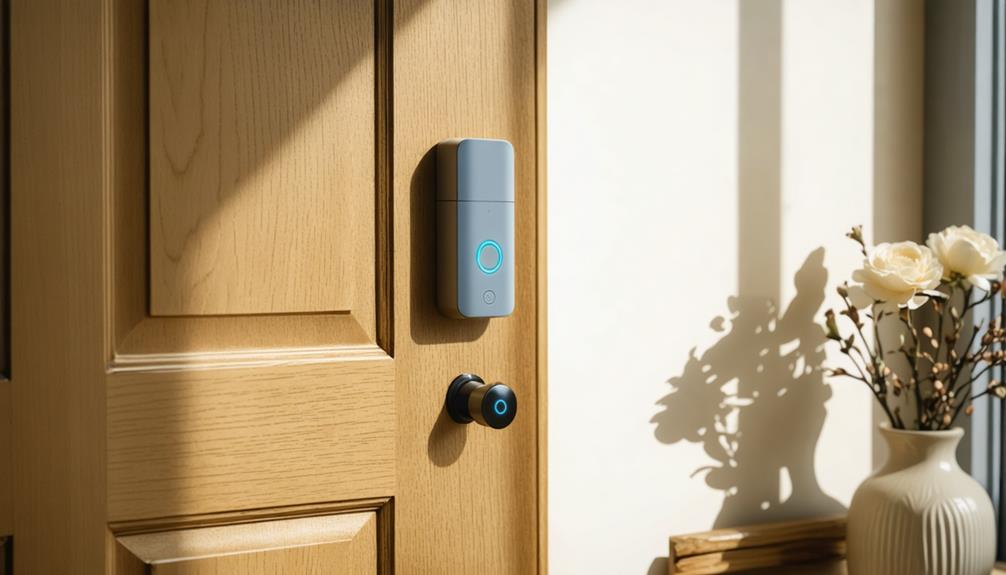
Brainstorm Security Shop

For Orders Over $199

On Any Of Our Products

Details On Refund Page
In the realm of home security advancements, reliable wireless door alarm sensor stand out as a pivotal innovation, offering unparalleled convenience and safety. These devices have transformed the way we think about securing our homes, integrating seamlessly with smart home systems to provide real-time alerts and automated responses. Their ease of installation and cost-effectiveness make them accessible to a wide range of homeowners. However, understanding the intricacies of their functionality, from magnetic field detection to infrared technology, poses an intriguing challenge. What are the critical considerations when choosing the right sensor for your home security needs? You can purchase one at brainstormsecurityshop.com were they have a variaty of alarms.
In recent years, the adoption of wireless sensors has transformed the landscape of home security systems, offering a multitude of benefits that enhance both convenience and safety. One of the primary advantages of wireless door alarm sensors is the significant cost savings they provide. Unlike traditional wired systems, wireless sensors eliminate the need for extensive wiring and professional installation, which can be costly and time-consuming. Homeowners can easily install these devices themselves, reducing upfront expenses and ongoing maintenance costs.
Moreover, wireless sensors contribute to enhanced security by offering greater flexibility and adaptability. These sensors can be strategically placed in various locations without being constrained by wiring limitations, ensuring comprehensive coverage of entry points. This flexibility not only enhances the detection capabilities of the system but also allows homeowners to expand their security network as needed, without incurring significant additional costs.
Additionally, wireless door alarm sensors often come equipped with advanced features such as remote monitoring and real-time alerts, enabling homeowners to respond swiftly to potential security breaches. This immediate access to information further bolsters the overall security framework, providing peace of mind and reinforcing the protective measures in place.
Understanding the mechanism behind wireless door alarm sensors involves grasping the principles of radio frequency technology and sensor integration. These devices rely on detection technology to identify unauthorized access, utilizing various sensor types to facilitate this process. Typically, magnetic sensors or infrared sensors are employed. Magnetic sensors detect changes in the magnetic field when a door opens, while infrared sensors recognize alterations in infrared light patterns. Both types send signals to a central control unit when they detect such changes.
Central to their operation is the transmission of signals using radio frequency technology. This technology allows for wireless communication between the sensor and the alarm system, ensuring seamless alert transmission. The signal, once transmitted, triggers the alarm, notifying individuals of a potential security breach. The efficiency of this process is largely dependent on the sensor’s placement and the surrounding environment, which can impact signal strength and reliability.
Here is a simple overview of wireless door alarm sensor components and their functions:
| Component | Function | Technology Used |
|---|---|---|
| Magnetic Sensor | Detects magnetic field changes | Detection Technology |
| Infrared Sensor | Detects infrared light alterations | Detection Technology |
| Control Unit | Processes sensor signals | Integration |
| Transmitter | Sends signals wirelessly | Radio Frequency |
| Alarm System | Sounds alert upon signal receipt | Integration |
Understanding these components and technologies is crucial for appreciating how wireless door alarm sensors maintain security.
Proper installation is paramount to ensuring the optimal functionality of wireless door alarm sensors. The initial step involves selecting an appropriate location for the sensor and its corresponding magnet, ensuring they align correctly when the door is closed.
Installation tips recommend placing the sensor at the top corner of the door frame, minimizing the risk of tampering and providing better transmission range. Before affixing, clean the surface to ensure maximum adhesion.
Once positioned, securely attach the sensor and magnet using screws or adhesive strips, as per manufacturer guidelines. Test the alignment by opening and closing the door, confirming the sensor activates and deactivates as intended. Proper alignment is crucial to avoid false alarms or missed detections.
For troubleshooting issues, ensure the sensor is within the range of the main control unit to prevent connectivity problems. Check battery levels regularly, as depleted batteries can lead to malfunction.
If connectivity issues persist, consult the sensor’s manual for resetting procedures or contact customer support for further assistance. Adhering to these installation tips not only enhances the sensor’s reliability but also extends its operational lifespan, providing peace of mind and security to the user.
Smart home technology seamlessly integrates with wireless door alarm sensors, enhancing their capabilities and user experience. By incorporating smart technology, these sensors can communicate with other devices within a home automation system, allowing for a more cohesive and interactive environment.
When a door is opened, the sensor can trigger various automated responses, such as adjusting the thermostat, switching on lights, or sending notifications to a homeowner’s smartphone, all without requiring manual intervention.
The integration process is typically facilitated through a central hub or smart home platform, such as Amazon Alexa, Google Home, or Apple HomeKit. These platforms allow users to set up routines and automate responses based on specific triggers, such as the opening of a door.
Moreover, wireless door alarm sensors can be linked with security cameras, providing a synchronized security setup that enhances monitoring and response capabilities.
Furthermore, smart technology enables these sensors to be controlled remotely through mobile applications. Homeowners can monitor the status of their doors in real-time, receive alerts of any unauthorized access, and even arm or disarm the system from anywhere.
This level of connectivity and control significantly boosts security while offering unparalleled convenience in home automation.
Selecting the appropriate wireless door alarm sensor is crucial for maximizing the effectiveness of your home security system. With a variety of sensor types available, it is important to assess your specific needs and constraints.
Magnetic contact sensors, for instance, are a popular choice for detecting door or window openings due to their reliability and ease of installation. For more advanced needs, motion sensors can detect unauthorized movement within a designated area, offering an additional layer of protection.
Budget considerations are an essential factor when choosing the right sensor. Entry-level magnetic sensors are generally more affordable and can serve basic security needs effectively.
However, investing in higher-end models with additional features, such as tamper alerts and connectivity to smart home systems, can enhance security and provide peace of mind. Wireless sensors with long battery life and low maintenance requirements may also justify a higher initial investment by reducing long-term costs.
Moreover, compatibility with existing security systems should be evaluated to ensure seamless integration.
Consider consulting a security professional to assess sensor types and budget constraints tailored to your home’s unique requirements, ensuring optimal protection without unnecessary expenses.
Battery longevity in such sensors generally ranges between one to two years, contingent upon usage and environmental factors. Regular sensor maintenance is crucial to ensure optimal performance and to promptly address any potential battery-related issues.
Wireless sensors are generally compatible with most door types, though installation tips suggest ensuring proper alignment for optimal functionality. Sensor sensitivity may require adjustment based on door material, thickness, and environmental factors to ensure accurate detection and performance.
Outdoor installation of alarm sensors is possible, provided the device is specifically designed for weather resistance. Ensure the sensor is rated for outdoor use to withstand environmental factors such as rain, temperature fluctuations, and UV exposure.
The range of a wireless sensor varies, typically between 100 to 300 feet, depending on environmental factors. Installation tips include placing sensors away from metal objects and minimizing signal interference from electronic devices for optimal performance.
False alarm prevention in security systems often involves sensor calibration to ensure accuracy. Proper calibration adjusts sensitivity levels, minimizing environmental triggers. Advanced systems may incorporate algorithms to differentiate between actual breaches and benign activities, reducing false alarms effectively.
